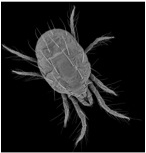1000 Fungal Genomes project in The Daily Barometer
Joey Spatafora, an associate professor at Oregon State University, is leading an international project to sequence the genomes of a thousand fungi, a project aptly named 1000 fungal genomes. “It’s a really, really exciting time in fungal biology because we can sequence fungal genomes more easily than we could ten years ago,” Spatafora said. The Daily Barometer [Read More]
